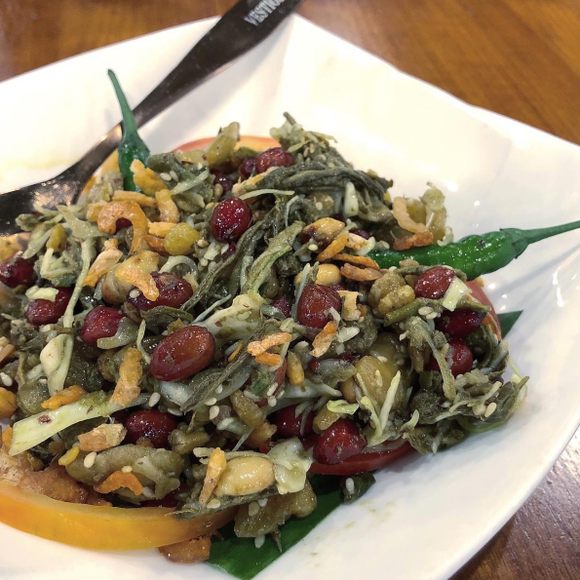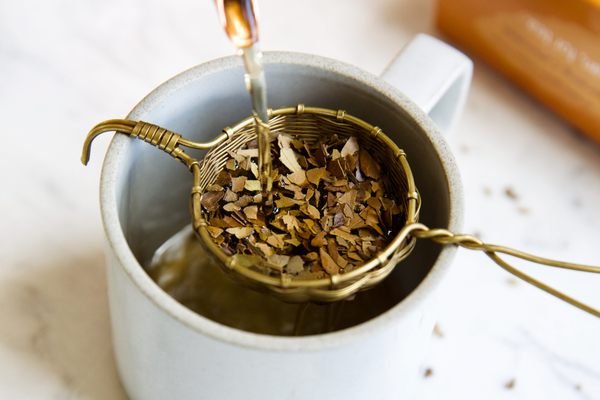Most people assume that the fate of all harvested tea leaves is to end up in a warm drink. In Myanmar, however, farmers set aside the finest leaves, called lahpet, for salad.
Just after plucking young leaves, growers separate them into two groups. The lesser specimens are dried and made into drinking tea, while those worthy of fermenting are placed into burlap sacks and buried underground. The latter leaves remain in storage for anywhere from four months to two years, developing unique flavors. The cookbook Burma Superstar describes the finished product as “slightly bitter, deeply savory, and strangely addictive.” A New York Times reviewer writes that the fermented leaves still contain “enough caffeine to twang the nerves like a harp.”
Lahpet thoke (pronounced “lah-pay toh”) means “green tea salad” in Burmese. Hosts often serve the salad’s various ingredients in separate piles, allowing everyone to customize the flavor profile of each bite. Guests mix the fermented tea leaves with strips of raw cabbage, thinly sliced garlic, green chile, fresh tomato, sesame seeds, peanuts, and crunchy beans. They season the medley with lime juice, fermented shrimp paste, and fish sauce. The blend packs a powerful mix of spicy, tangy, earthy, and nutty flavors.
Today, lahpet thoke is ubiquitous as both street food and haute cuisine in Myanmar. Burmese diners commonly enjoy the salad at the end of a meal. Traditionally, the dish also served as a peace offering between warring kingdoms. The perfectly customizable salad gave everyone what they wanted, even if only for a moment.
Written By
 rachelrummel
rachelrummel
Sources
- www.huffingtonpost.com/entry/tea-leaf-salad_us_5937fa29e4b0ce1e7409675d
- www.nytimes.com/slideshow/2017/04/27/dining/together/s/03HUNGRY-TOGETHER-slide-3HUF.html
- www.amazon.com/Burma-Superstar-Addictive-Crossroads-Southeast/dp/1607749505
- www.arborteas.com/burmese-tea-leaf-salad-or-lahpet-thoke-recipe/
- www.kcet.org/food/recipe-burmese-tea-salad-lahpet-thoke
- www.sciencedirect.com/science/article/pii/S2352618115000645












